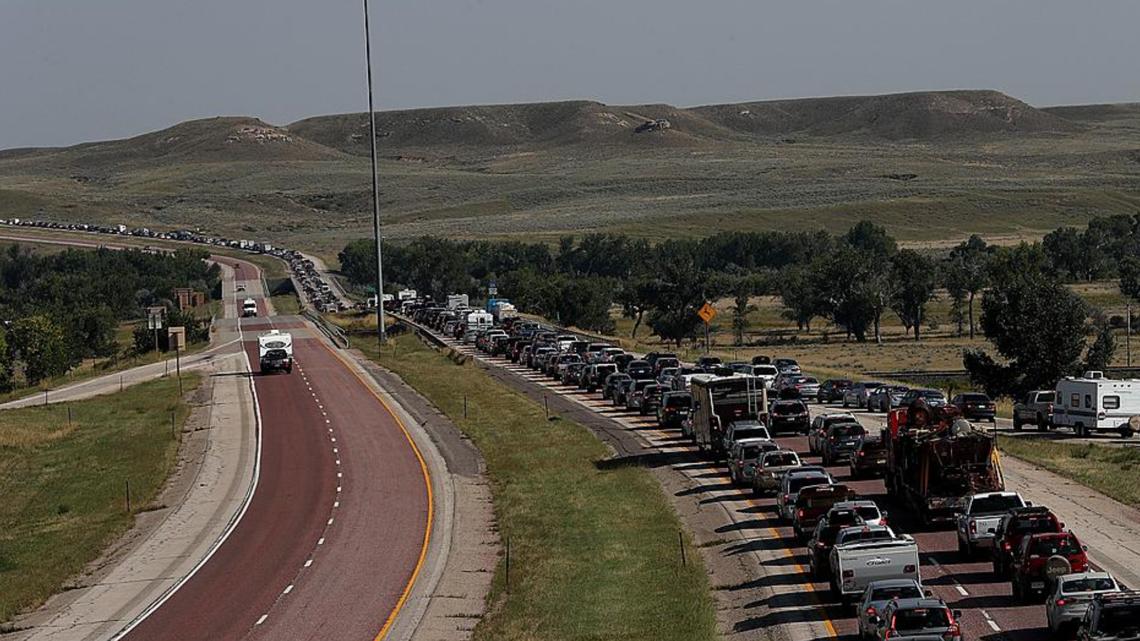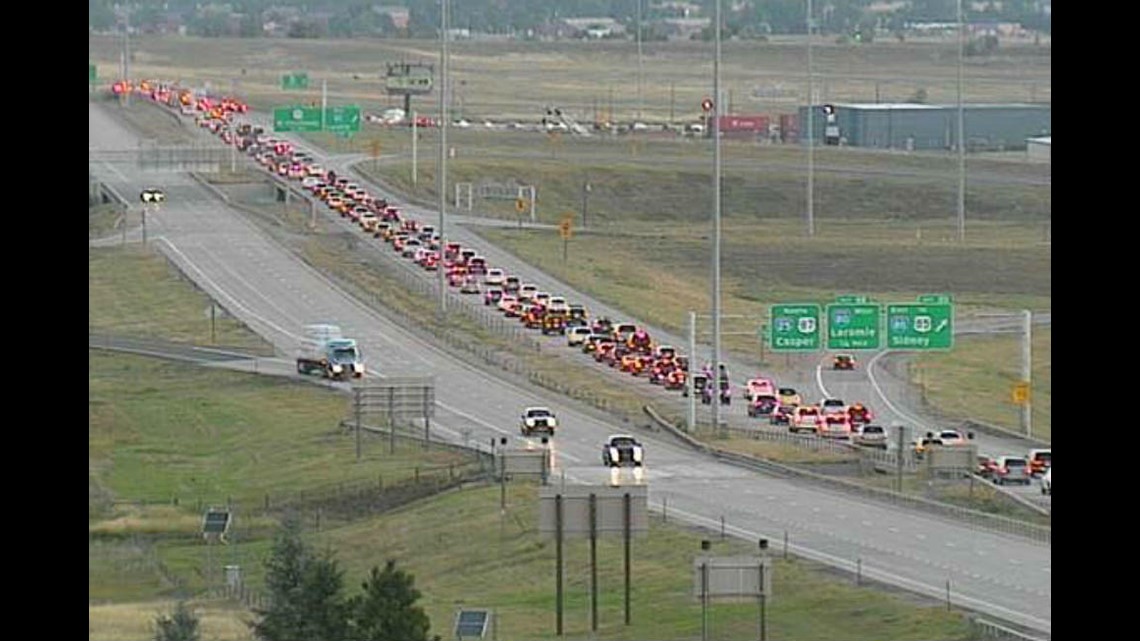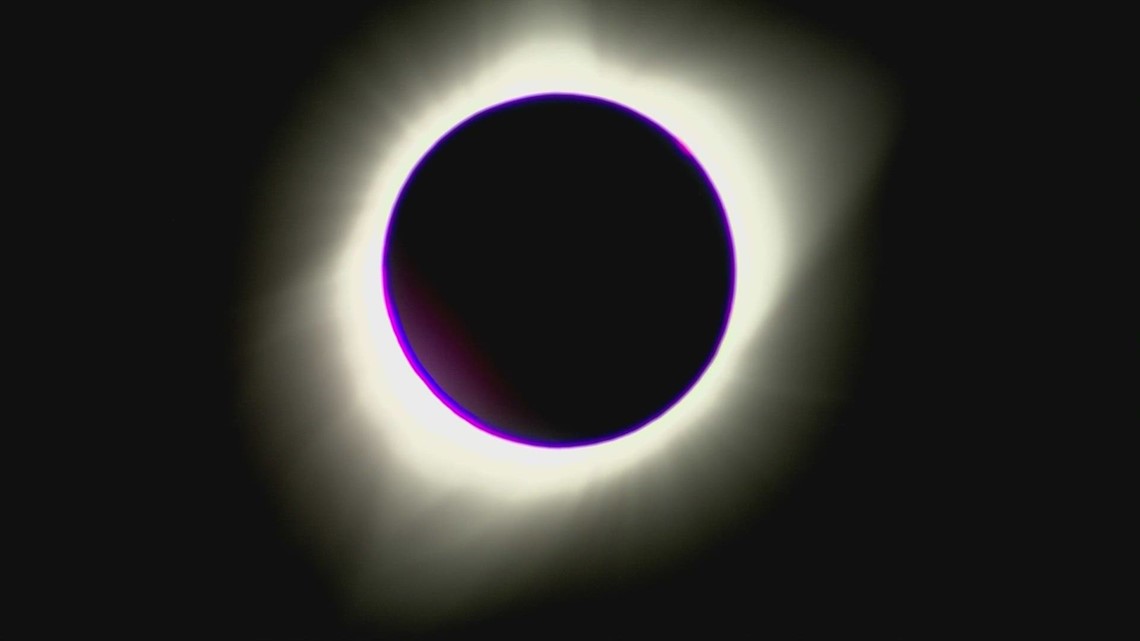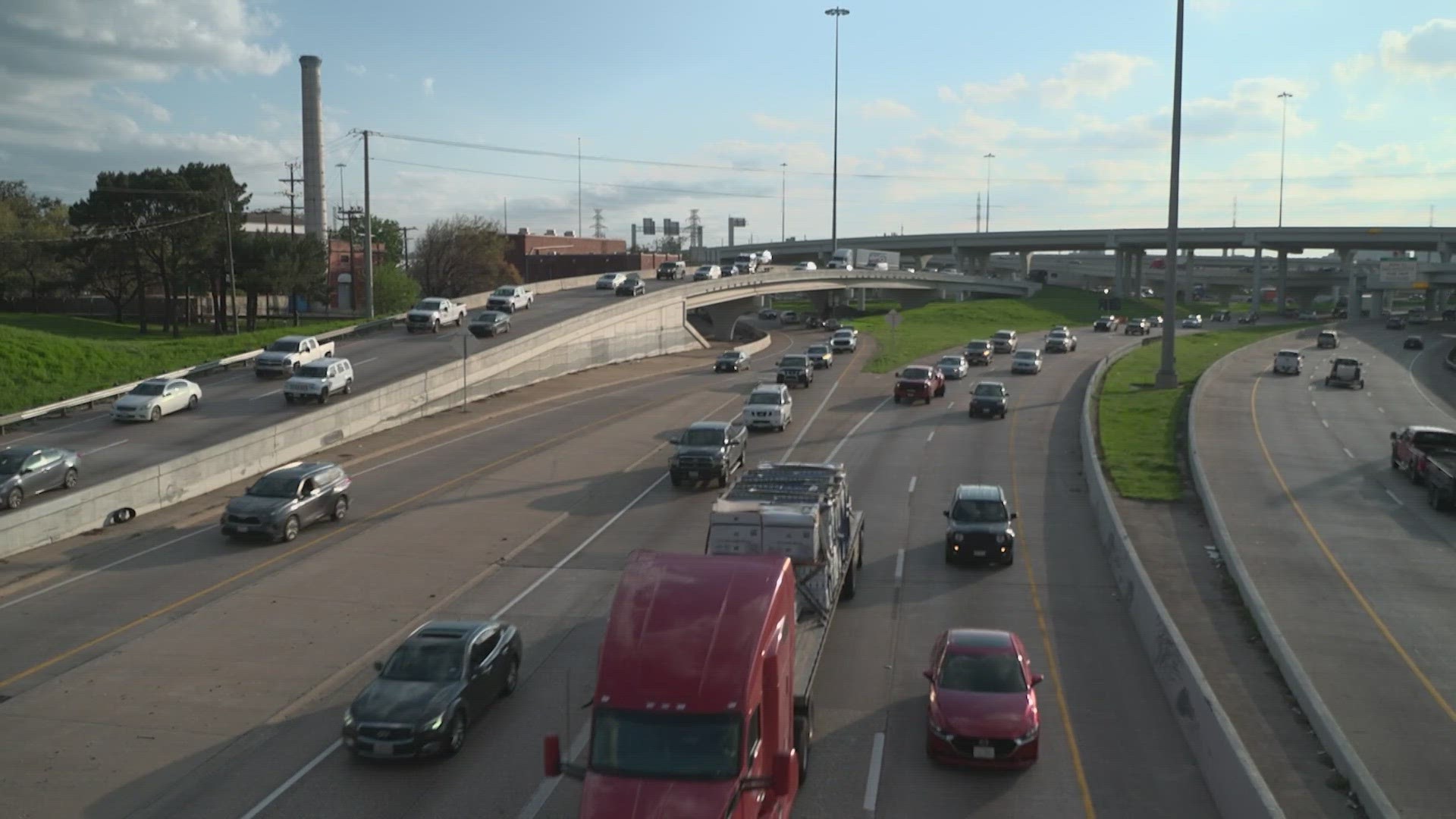DALLAS, Texas — As of Wednesday, Texas is 26 days away from April 8th's much-anticipated total solar eclipse. The event is expected to bring hundreds of thousands, potentially millions, of visitors from around the globe to the Lone Star State.
Some counties have already issued disaster declarations to loosen spending restrictions and position aid and resources to prepare for the event and sudden influx of visitors.
WFAA exclusively learned Wednesday that Wyoming's Department of Transportation (DOT) has shared lessons learned with Texas leaders about its total solar eclipse event in 2017, which resulted in one of the worst traffic jams in the state's history.


Spokesperson Doug McGee, who has been with the department since 2001, said he was recently on a joint call with TxDOT, Department of Public Safety officials, and law enforcement from across the state to discuss traffic control—one of the biggest issues facing our communities.
"We had visitors from all over the world," McGee said. "Estimates were about 500,000 to 1.5 million. We easily doubled the state's population (579,994), leading to the eclipse event. The roads were completely overwhelmed--there were times when I thought you could walk 175 miles from Cheyenne to Casper on the hoods of vehicles and never touch the ground."
Like local leaders are preparing now, Wyoming prepared before August 2017. A total solar eclipse brings folks from everywhere, and Wyoming had some of the best totality durations, specifically around the town of Casper.
Preparation was extensive, but McGee said the state underestimated traffic volumes. He told WFAA Wednesday that people started arriving in the state a week in advance but that things picked up the day before and leading up to the hour of the eclipse.
"Those last few moments, the roads were just totally bogged down, and people just had to pull off where they were and watch the eclipse," McGee said.
After it was all over, the floodgates opened. Every vehicle, from RVs and campers to a regular sedan, got out of Dodge. McGee said most of the state's highways, including the significant thoroughfare Interstate 25, were logjammed.
"Everybody just decided to leave at once," McGee said. "I'd never seen it like that--I can't imagine a traffic jam like that ever in Wyoming. Seeing this line of cars that went on forever was phenomenal." In an after-action report that looked at what worked and what didn't by multiple state agencies--traffic was a concern that constantly came up.
Wyoming's Military Department even wrote, "It would have been difficult to respond by ground vehicle to any location along major highways in the southeast of the state."


One hundred ninety-eight crashes were reported as folks came and went, including a collision with a bison. That was up 113% from the average crash data volume, per McGee. He also said there were significant sanitation issues--drivers had to relieve themselves along the roadways because of all the open space and nowhere to go.
McGee's advice to Texas officials?
"We should have thought of how to release all that pressure with a lot of traffic control. We don't have as many alternative routes as other states--so I think we could have done that a lot better," McGee said.
If you look at the images from that historic logjam and have also spent ten minutes in rush hour traffic in the metroplex--you might laugh.
Because Texas always gets an absurd amount of visitors. Not to mention, our transportation infrastructure, specifically in the metroplex, is well-suited to absorb frequent influxes.
But it still might be a headache after the eclipse on April 8th is over, and smaller highways may not fare as well, especially in Ellis County, where totality duration times are the best in the metroplex.
- --Ennis, 4 mins 23 seconds.
- --Waxahachie 4 min 19 seconds.
- --Red Oak, 4 min 15 seconds.
- --Midlothian 4 min 4 seconds.


Ellis County Judge Todd Little told WFAA last Friday that traffic was his big concern and that emergency vehicles need to be able to access parts of the county before, during, and after the eclipse.
"When you go back and study that eclipse that happened in Wyoming, they had traffic and sanitary issues," Little said. "There will be medical issues that come up if we have up to 200,000 new people in the county. We want to ensure that we care for people's lives and have the ambulance services available and ready to go."
Little also encouraged folks to get groceries and gas before the eclipse because traffic issues may arise.
Austin is worried about traffic, too. Travis County officials issued a disaster declaration last Friday--part of it requires anyone hosting a viewing party of 50 or more to register with the county so officials can estimate crowd sizes and position emergency resources efficiently.
Travis County expects between 100,000 and 1 million visitors, County Judge Andy Brown said Friday. Even so, Austin's duration is expected to be just 1 minute and 44 seconds. Passionate eclipse enthusiasts are more likely expected to head to Ellis County.
Little told WFAA that commissioners are considering a disaster declaration but may not issue one until closer to the event.

